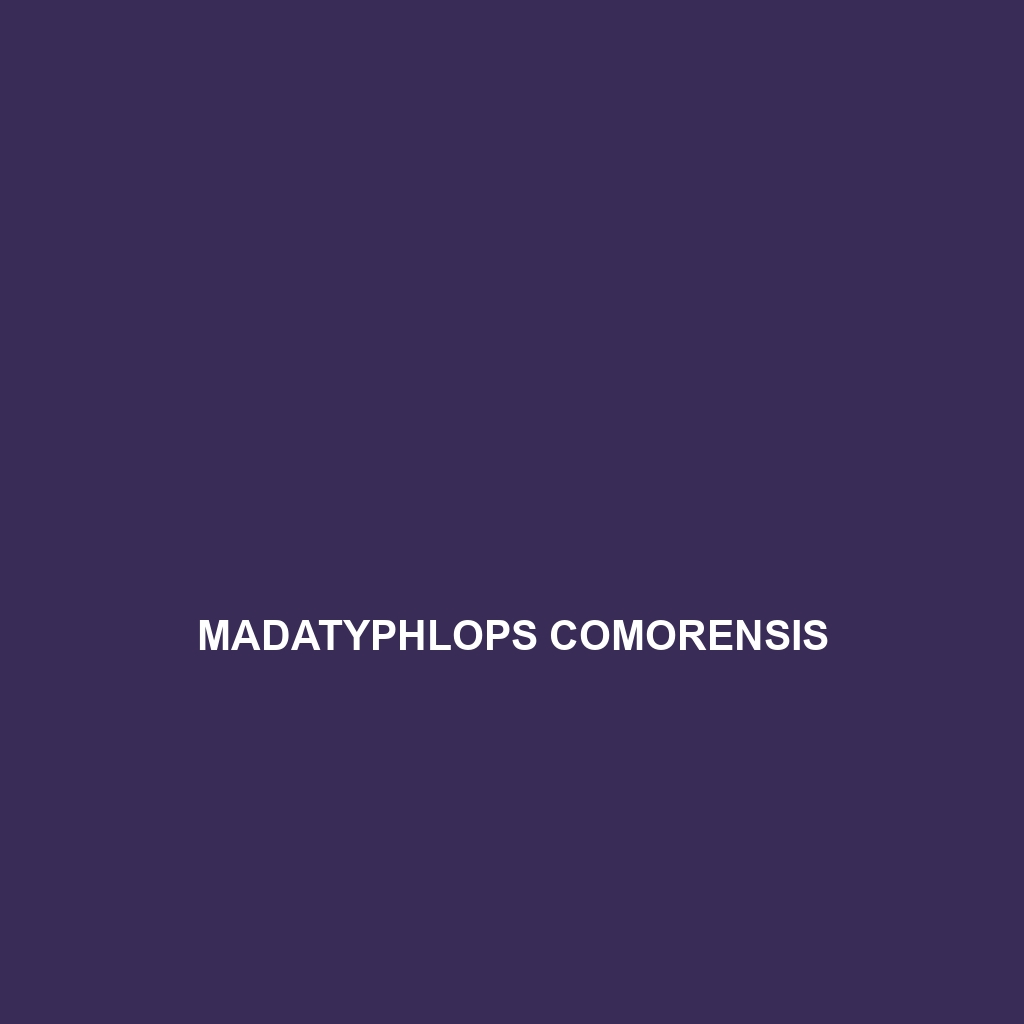Common Name
Madatyphlops comorensis
Scientific Name
Madatyphlops comorensis
Habitat
The Madatyphlops comorensis is primarily found in the humid, tropical regions of the Comoros Islands, an archipelago located off the eastern coast of Africa. This species thrives in various natural settings, including lush rainforests and subtropical environments. Its preferred habitats are characterized by high humidity, dense vegetation, and rich biodiversity, which provide ample cover for this burrowing snake. The warm, tropical climate with average temperatures ranging from 25°C to 30°C (77°F to 86°F) facilitates the survival and breeding of Madatyphlops comorensis. These environments also support a range of fauna and flora, making it an integral component of the local ecosystem.
Physical Characteristics
Madatyphlops comorensis exhibits a distinctive morphology that includes a cylindrical body shape, with an average length of approximately 40 to 60 centimeters (16 to 24 inches). Its skin is smooth and covered with small scales, providing a streamlined appearance for burrowing. The coloration typically ranges from dark brown to light tan, often with lighter bands or spots, helping it blend seamlessly into the forest floor. A notable feature of this species is its reduced or absent eyes, a common adaptation among burrowing snakes, which enhances its ability to navigate underground while minimizing the risk of predation.
Behavior
This species is primarily nocturnal, as it tends to be more active during the cooler hours of the night. Madatyphlops comorensis displays unique habits, such as living in burrows that it creates using its muscular body. Social interactions are minimal, as these snakes are solitary creatures. During the mating season, males engage in competitive displays characterized by physical combat and posturing to attract females. Their cryptic lifestyle, accompanied by a reliance on chemical signals, aids in sensing the environment despite limited vision.
Diet
Madatyphlops comorensis is classified as an insectivore, primarily feeding on small invertebrates such as earthworms, insects, and larvae. Its diet is essential not only for its growth and reproduction but also for maintaining the ecological balance in its habitat. The process of foraging typically occurs in the soil, where the snake uses its acute sense of smell to locate prey. This feeding strategy contributes to nutrient cycling within the ecosystem, as it helps control insect populations and enriches soil composition through the consumption of organic matter.
Reproduction
The reproductive cycle of Madatyphlops comorensis occurs seasonally, with mating primarily taking place during the rainy season when food availability is high. After a gestation period of approximately 2 to 3 months, females give birth to live young, typically ranging from 5 to 10 offspring. Maternal care is limited, as the young are independent soon after birth. The reproductive success of this species is crucial for its population sustainability, particularly in the face of habitat loss and environmental changes.
Conservation Status
Currently, Madatyphlops comorensis is classified as vulnerable due to habitat destruction and human activities that threaten its rainforest ecosystem. Deforestation for agriculture, urbanization, and invasive species pose significant challenges to the survival of this unique species. Conservation efforts are focused on habitat protection and restoration measures, alongside raising awareness of the ecological significance of the Comoros Islands’ biodiversity. Initiatives are underway to establish protected areas to safeguard Madatyphlops comorensis and other native fauna and flora.
Interesting Facts
Madatyphlops comorensis holds several intriguing aspects that make it a remarkable species. One notable characteristic is its ability to detect vibrations through the substrate, compensating for its limited eyesight. Additionally, this species exhibits a unique behavior known as “kinesis,” allowing it to adaptively change its movement speed and direction in response to environmental stimuli, which is crucial for navigating its complex underground habitat.
Role in Ecosystem
As an insectivore, Madatyphlops comorensis plays an essential role in controlling insect populations within its habitat. This species contributes to the overall health of the ecosystem by maintaining the population dynamics of prey species. Furthermore, its activities of burrowing aerate the soil, facilitating nutrient movement and improving the growth conditions for plants. In its role as both a predator and prey species, Madatyphlops comorensis helps establish a balanced food web in the rich, biodiverse environments of the Comoros Islands.
